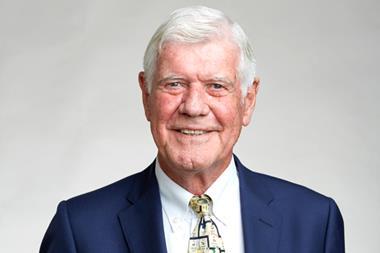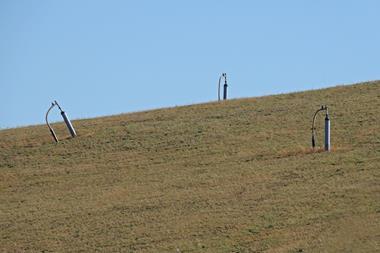Readers discuss the environment and greener fuels, and speculate on chemistry’s role in the first world war
Not converted
Discarding old issues of Chemistry World, the cover of one flagged an article on hydrogen power. This is extremely topical just now, so I read it. I felt that it could have been written yesterday, but it was in the August 2018 issue. Yes, there is more government money going into hydrogen project developments now, but is there real progress? Enough to meet our 2030 and 2050 decarbonisation targets?
The idea of a new technology to enable us to carry on without massively changing our lifestyles is attractive to politicians, but I suspect it’s a siren lure. We have to change and we will need storage for the large amounts of surplus renewable energy which it’s hoped to produce. But will conversion to H2 be a niche or the preferred option? I’m sure there will be a place for H2 to be used for some transport modes (perhaps as NH3), but for home heating it will surely be more efficient to use it directly, via heat pumps. Well done to Angeli Mehta for her article, and I hope to read her follow-up articles soon.
Tom Leatherland FRSC
Fife, UK
Walk the talk
One thing that makes many of us happy is enjoying the environment that we live in. This can be by going on holiday, going for a walk or just watching how plants and animals live their lives. Some of us are growing our own flowers and vegetables. In fact living with other plants and animals is essential for our survival on the planet.
During the pandemic appreciation of nature seems to have increased. Many of us have done short daily walks during lockdowns and local car parks next to scenic walks have been overflowing. However, young people like Greta Thunberg have been campaigning to highlight that if we are not careful this may not always be the case.
Scientists have been discussing for some time how to deal with pollution and climate change at an international level. The wealthier countries in the world need to supply money, technology and resources because poorer countries cannot. This is fair because it is the wealthiest countries who have caused the problem. A well-funded organisation run by the United Nations would finally lead to international action being taken.
Instead of being negative about the changes we should be excited. New science and technology will be developed and used in our everyday lives. There will be new uses for land and new job opportunities for people. We should take pride in dealing with waste more effectively through using new materials, recycling and dealing with waste currently just dumped on land and in the sea. Badly damaged ecosystems can be repaired so that plants and animals can thrive there once more.
One reason for the lack of action could be the use of slogans like ‘save the earth’. In fact, the earth and nature are older and much stronger than we are. We must act now to protect our quality of life and to stop the worst case scenario, which is causing our own extinction.
David Parkin
Via email
Pity the fuel
I was bemused to read that the University of Keele has shown that a 20% blend of hydrogen in methane is capable of safe distribution as a fuel. During my childhood, domestic gas was produced by the destructive distillation of coal. A typical composition was 50% hydrogen, 35% methane and 10% carbon monoxide. The carbon monoxide rendered it poisonous, but it was widely distributed by pipeline without undue difficulty.
Every gasworks produced coke, which was sold as a cheap fuel for use in stoves etc. It represented the carbon-rich residue remaining after the destructive distillation of bituminous coal. The coal gas industry died when natural gas became available.
Today, if the coal gas industry was revived, the coke could be kept as a store of carbon, perhaps being used for purposes other than combustion. The amount of carbon dioxide produced by the combustion of coal gas would be much less than that produced by burning methane.
Michael Baldwin FRSC
Sittingbourne, UK
Wartime chemistry
Remembrance Sunday and the recent article on Clara Immerwahr, the wife of Fritz Haber, has prompted me to question the historian’s take on the origins of the first world war. While the assassination of Archduke Franz Ferdinand gave the excuse for the warmongers to unleash their considerable armies, was it the technological breakthrough of the synthesis of ammonia that made the war possible? Explosives and fertilisers need a plentiful supply of nitrates. These were obtained from the considerable deposits of sodium nitrate shipped to Europe in bulk. A British naval blockade could stop these imports to Germany and severely limit their explosives and fertiliser production. The Haber–Bosch process made it possible for Germany to become independent of the imports from South America, making the conflict viable.
My history teacher had been a prisoner of war in Germany in 1918. He was fed near-starvation rations but did not hold it against his captors since the whole population was in the same position. He told us that the British authorities had to import dyes for service uniforms from Germany via neutral Holland during the conflict. He also told us that David Lloyd George used a tax on beer early in the 20th century to help fund grammar schools to produce more scientists. He never mentioned the Haber–Bosch process.
Barry Cramp CChem MRSC
Bungay, UK
IOU a correction
Oops! In the news section in November’s Chemistry World, in the top left item on p6 there is ‘iron-bound phosphorous atoms’. Schoolboy error – surely every budding editor on the team has it battered into them always, always to double-check the correct spelling of phosphorus.
Phil Weston FRSC
Lancaster, UK
Corrections
In The science of breast milk and baby formula (Chemistry World, November 2021, p48), the structure of lacto-N-tetraose on p50 was incorrect. The correct structure can be seen online at rsc.li/3qLlfJV
In Phosphorus(v) method to make unnatural oligonucleotides rivals industry standard (Chemistry World, November 2021, p31), the Phosphodithioates structure was incorrect. The correct structure can be seen online at rsc.li/3HjZ2IK












No comments yet